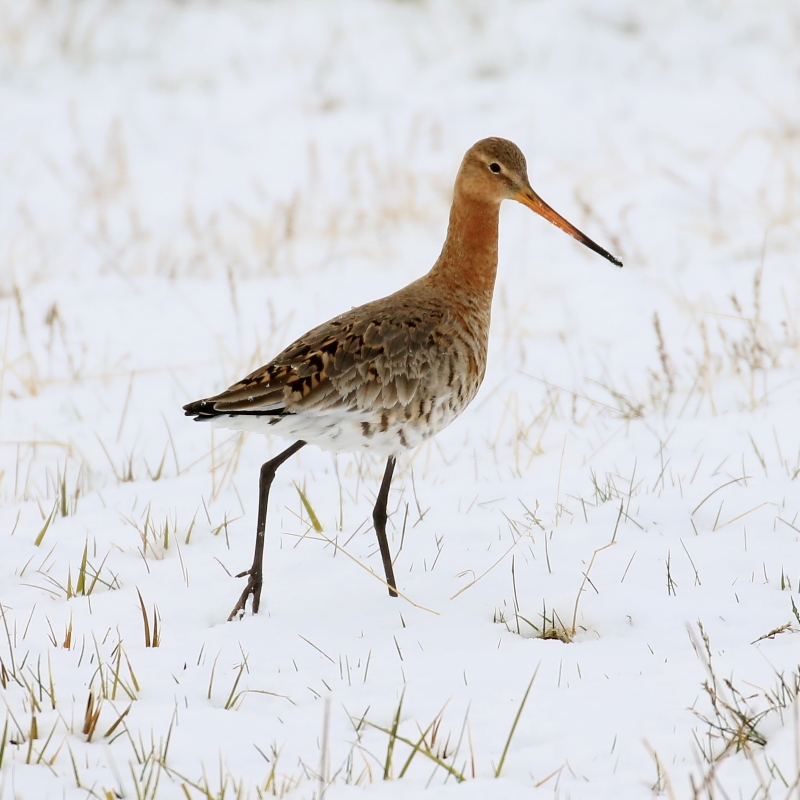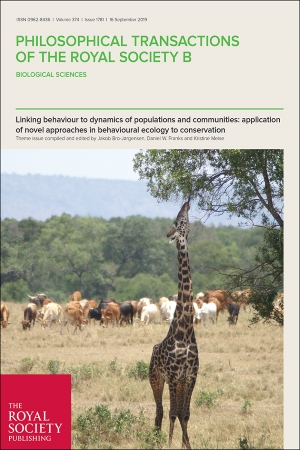The latest issue of Philosophical Transactions B discusses how the emphasis in animal behaviour research on understanding individual variation in behaviour is crucial in explaining what is otherwise regarded as random noise in natural systems.

Human activities have in recent decades caused drastic declines in wildlife populations world-wide. Whilst the need to act is urgent, effective strategies require evaluation of the likely outcomes of alternative management options. Here behavioural ecology has an important contribution to make due to the key role of behaviour in mediating animal responses to environmental changes. The latest issue of Philosophical Transactions B discusses how the emphasis in animal behaviour research on understanding individual variation in behaviour is crucial in explaining what is otherwise regarded as random noise in natural systems. We spoke with one of the Guest Editors, Dr Jakob Bro-Jørgensen from the University of Liverpool, about the issue.

Tell us about the idea behind this theme issue and how it came about.
When I started studying African savannah mammals more than 20yrs ago, I was fascinated by how their behaviour has been shaped by evolution to fit into their natural environment. Since then – like many other field biologists – I have been witnessing first-hand the intensifying impact people are having on the natural world. To grasp the consequences, it seems obvious that we must now use our behavioural ecological knowledge about how animals respond to their environment to predict the future. This can tell us what the most effective conservation action is likely to be. Still the importance of behaviour for conservation is often missed. A lot of conservation attention is now focused on ‘big picture’, macroecological studies which – although very valuable – ignore crucial aspects of the ecoevolutionary processes that we are trying to protect. To redress this imbalance, our theme issue aims to flag up the huge potential of behavioural ecology to everyone with an interest in natural resource management. Recently, we brought together a broad range of experts for a symposium at the Zoological Society of London and the contributions in this theme issue are based on that inspiring event. It is clear that recent years have seen many exciting developments in a range of academic disciplines which are directly relevant for behavioural ecological research and these have led to innovative applications in conservation – and we are undoubtedly on the cusp of more major breakthroughs in this area.
What do you think is the most exciting potential application discussed in the papers?
There are many, from social network analysis of disease transmission and modelling of human environmental behaviour to novel approaches that improve the antipredator responses of translocated animals. But if I must highlight just one, it would probably have to be the application of behavioural ecological analysis in movement and landscape ecology. Here technological advances in animal tracking and remote-sensing of the environment are revolutionizing the amount of data available and its resolution in time and space. This opens up ground-breaking new opportunities to determine the principles that guide how animals use the landscape…. Research in this area can allow us to be smart about how we can accommodate the requirements of both people and wildlife in integrated land-use plans.

In the theme issue, Gill et al investigate generational changes in migratory patterns of the Icelandic black-tailed godwit (Limosa limosa islandica) (photo: Tómas Gunnarsson)
Did you learn anything new when editing the papers?
Indeed, every single paper taught me several interesting things… and also general themes and insights emerge when editing so many papers on a common topic. It came with a strong, encouraging feeling of how we all work together by targeting different, inter-linked, aspects of a common challenge, to find out how natural systems work.
What’s the biggest take-away message from the papers in the issues?
That behavioural ecology should be far more central when it comes to setting conservation priorities and identifying conservation solutions than is the case at the moment. Why? Because our focus on explaining behavioural variation among individuals is key to make reliable models of how populations and communities respond to environmental change. Behavioural ecology can tell us what is adaptive and what is not, what is hard-wired genetically and what is phenotypically plastic – this information is crucial if we are to preserve natural eco-evolutionary processes, which is the central goal of biodiversity conservation.
How was your experience of being a Guest Editor on Phil Trans B?
Absolutely fantastic! When deciding to edit this publication, it did cross my mind that it might well entail a lot of time spent on administrative tasks, such as chasing lagging contributors, getting referees, proof-reading etc. But the setup of the journal is awesome! The online submission system and support from the staff made the administrative side of things run very smoothly indeed. As an editor, I could very much concentrate on the science side of things, and the whole process was very inspiring and stimulating. The aim of the journal was clearly to get the publication as strong as possible and I really appreciated their flexibility and constructive advice in that regard.

Tell us a bit about your own research.
Much of my research has focused on communication and reproductive strategies in savannah herbivores, and I’m passionate about conservation of large mammals: these iconic species are amongst the most severely threatened taxa on the planet today – because of their size, they reproduce slowly and range widely and they are therefore in double jeopardy as they are highly vulnerable to both overexploitation and habitat loss. My research group aims to address this by investigating how threat processes operate and making recommendations for management based on that. Our projects span from forecasting how antelope species distributions respond to climate change to research on parasite transmission in multi-host systems in the wild. In this theme issue we present the results of a field study which shows how the social attraction between different savannah species changes from the wet to the dry season. This has potentially important implications for conservation as rainfall patterns are expected to change due to climate change. What is likely to have been adaptive seasonal variation in community structure could suddenly become maladaptive responses to novel environmental conditions created by human activities.
Keep up to date with the latest issues of Philosophical Transactions B by signing up for article alerts, and browse previous theme issues of the journal.






